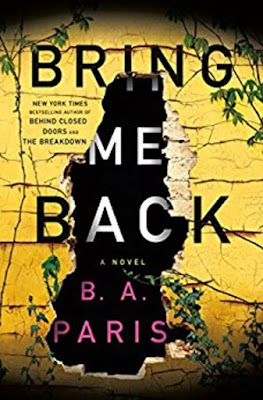97. Lost in Shangri-La by Mitchell Zuckoff
 Lost in Shangri-La: A True Story of Survival, Adventure, and the Most Incredible Rescue Mission of World War II by Mitchell Zuckoff (Canada) - (US)
Lost in Shangri-La: A True Story of Survival, Adventure, and the Most Incredible Rescue Mission of World War II by Mitchell Zuckoff (Canada) - (US)Pages: 326 +extensive Notes & Bibliography
Ages: 18+
Finished: Apr. 18, 2011
First Published: Apr. 26, 2011
Publisher: Harper Collins
Genre: non-fiction, war, WWII, survival, rescue
Rating: 4/5
First sentence:
On a rainy day in May 1945, a Western Union messenger made his rounds through the quiet village of Oswego, in upstate New York.
Acquired: Received a Review Copy from Harper Collins Canada.
Reason for Reading: I love true war stories but I also love true survival stories, so this doubly appealed to me.
A sight-seeing plane carrying 24 enlisted passengers across the jungle of modern day New Guinea (who were stationed nearby) crashed and burned leaving a total of three survivors in a remote valley inhabited by tribes who mostly had not seen white men before and still lived in the stone age. This books gives the complete story of these people, enlisted and native. Prior to the fateful plane trip we meet the individuals who will be on board and learn their story, how and why they came to be aboard and some who just barely missed being passengers. We learn of life at the base of Hollandia where they were stationed, paratroopers on standby, enlisted soldiers waiting for deployment to somewhere else (where the action is) and a group of WACS fulfilling their enlisted duties.
We go through terrifying details of how the crash was probably caused though no blame has ever been laid by officials and the gory aftermath of the scene. Of the three survivors, only one is unharmed, the other two have serious burns and other injuries and thus starts their survival story where they eventually meet up with the natives of the land. Mostly a war-like people, but little do the survivors know that they are fulfilling a legend of the natives.
The main focus of the book though, is in the rescue of these people, as others are sent down to tend to their medical needs and set up a base of operations. The valley is surrounded by mountains too high and cross winds too dangerous. It is too narrow for an airstrip landing. The outside terrain is rough, dangerous, inhabited by known cannibalistic tribes and the island is also inhabited by hidden Japanese units. Rescue seems near impossible from any route: across land, by water or by air. But as the incident becomes known back in America and the one survivor a pretty WAC, reaches the interests of Hollywood, the pressure is doubled to make sure the rescue attempt is successful. The final solution is quite the thing and could only have happened at this time in history.
A captivating story that starts with daily enlisted life on a tropical island where no real wartime action was being seen at this point, an horrific plane crash and the emotional and mental endurance of the survivors. The interesting transformation of the (I won't say white men as many of them were Filipino) "civilized" people's opinion's of the natives whom they regularly called "savages" at first to the the respectful attitude they held when they said their tearful goodbyes. This is a good read, a quick read and a non-fiction story that keeps the reader reading and enthralled. The author's personal interviews with some of the survivors and having gone back to the scene of the crash and talked to those natives who were children when the events happened he's managed to bring the natives' perspective of the events to the reader as well. An enjoyable and fascinating read.


I've been reading good things about this book. Glad to see it worked for you. My father was in New Guinea during this same time period as an Army private. That makes this even more interesting for me.
ReplyDeleteI'm glad to see you enjoyed it. I'll have to keep it in mind. I hope it's okay to link to your review on War Through the Generations.
ReplyDelete